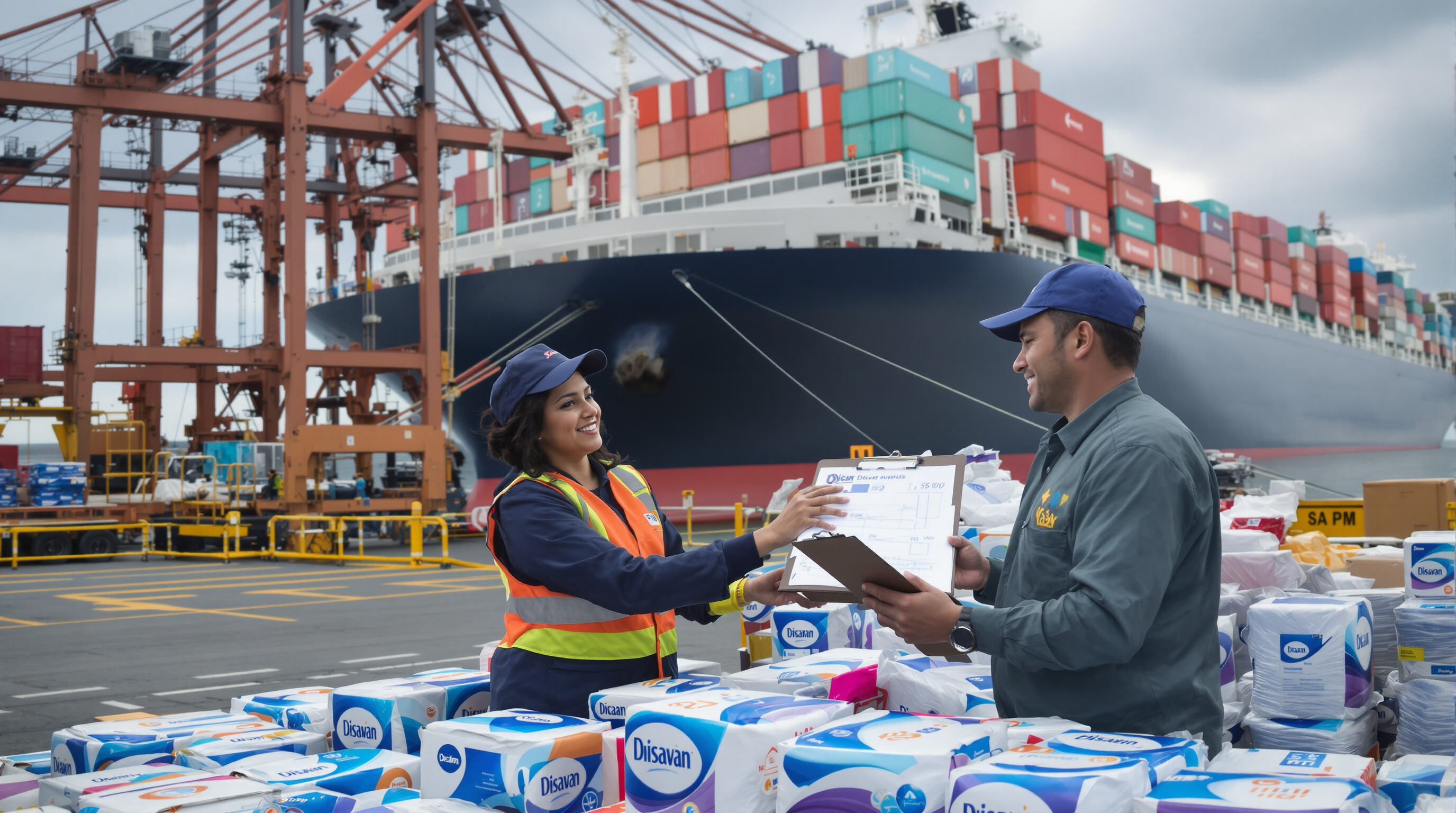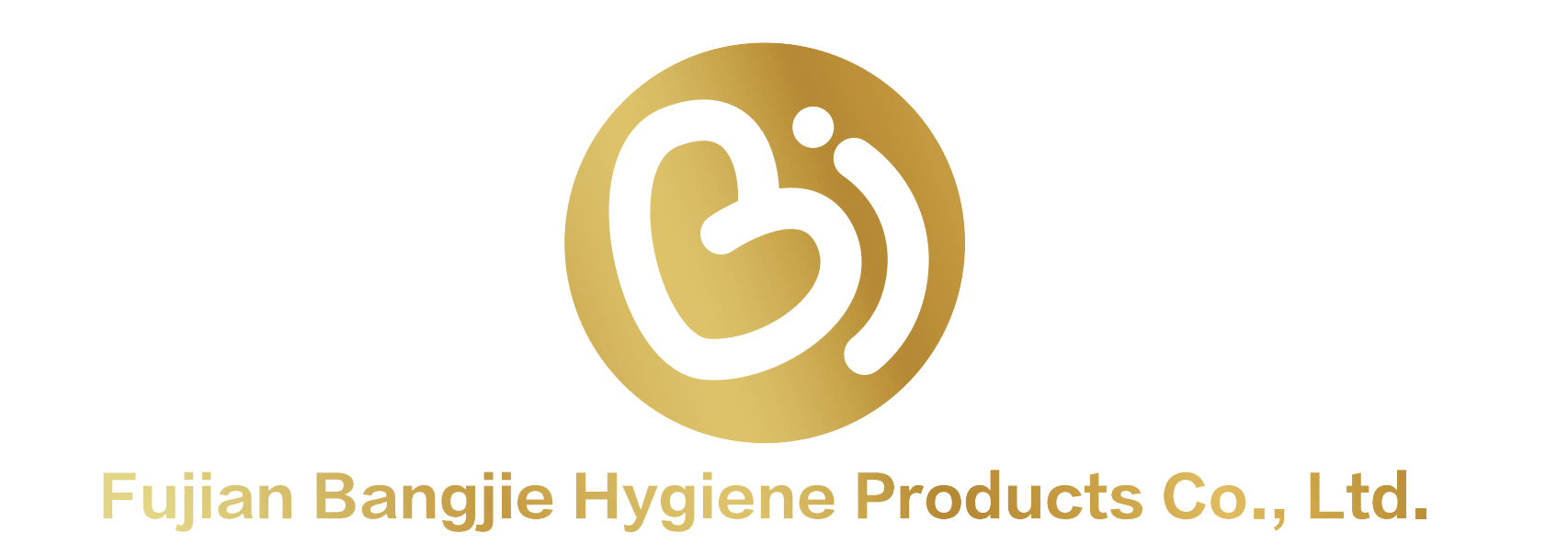Тээврийн нөхцөл: Хөлгөт цэвэршүүлийн экспортод FOB болон CIF-ийн талаар тайлбарлах
FOB болон CIF-ийг ойлгох: Winged Sanitary Napkins экспортод чухал байр эзэлдэг Incoterms
Олон улсын худалдаанд FOB (Free on Board)-ийн тодорхойлолт
FOB нөхцөлөөр Хөл бүхий цэвэр булчин хөхөөр хэрэглэгчдэд экспортлох үед борлуулагч нь бүтээгдэхүүнүүдийг тавих үед хариуцлагыг худалдан авагчид шилжүүлдэг. Экспортлогч нь бүх зүйлийг бохирдлын баримт бичигтэйгээ хамт нийт тээврийн зардлыг төлж тээвэрлэх үүрэгтэй байдаг. Эсрэг талаар импортлогч нь далайн эсвэл тэнгисийн тээвэрлэлтийг хариуцаж, даатгалын хөрөнгийг худалдан авах ба бараа очих газраа хүрсний дараа шаардлагатай бүх ажлуудыг хийх үүрэгтэй байдаг. 2024 оны худэр мэдээллийн судалгаа нь хүлээн авагчид тээврийн зардлыг хэрхэн хянах боломжтой болгохын тулд Хятадын гигиений бараа экспортлогч компаниудын гуравны хоёр нь FOB гэрээг сонгож байгааг харуулж байна. Энэ нь олон бизнесийн нэгжүүд олон улсын үйл ажиллагааны тогтвортой зардлыг хүсдэгтэй холбоотой юм.
Экспорт тээвэрлэлтийн CIF (Зардал, Даатгал, Тээвэрлэлт) тодорхойлолт
CIF нөхцөлд борлуулагчид илүү их үүрэг хүлээдэг тул бүтээгдэхүүний өртгийг төлөх, нийтлэгийн дүнгийн ойролцоогоор 110% дахин даатгал хийлгэх, тээврийн зардлыг төлөх зэрэг үүрэгтэй байдаг. Хүйтэн хэвийн температуртай байх шаардлагатай бүтээгдэхүүн жишээлбэл, Хөл бүхий туулга түүхий материал гэх мэт бүтээгдэхүүнийг нэг эрх бүхий байгууллага нь эхнээс нь төгсгөл хүртэл бүх зүйлийг хариуцаж байгаа нь томоохон ялгаа болдог. Хүйтний цэгц зам тасрахгүй, мэдээлэл хоорондын харилцаа алдаа гарахгүй байх боломжтой. Худын тайлангаас үзэхэд FOB-аар тээвэрлэсэн барааны дөрөвний нэг нь олон талын оролцоотой байгаа тул санхүүгийн асуудалд тулгардаг. Иймд мэдээж мэдрэг ачааг CIF нөхцөлөөр тээвэрлүүлэхийг ихэнх компанийн сонголт болгодог.
Инкотермсын дүрэм нь Хөл бүхий туулга түүхий материалын экспортод хамаарах журам, баримт бичгийн ач холбогдол
Зөв INCOTERMS-ийг сонгох нь гаалийн үр ашигт чанарт шууд нөлөөлдөг. FOB нь худалдан авагчдад нийтлэн нэг дутуу импортын баримт бичгийг гаргах шаардлагатай болгодог бол CIF нь экспортын зөвшөөрөл болон худалдааны нэхэмжлэхийг зарим худалдагчид өөртөө авч явдаг. 2023 оны гаалийн дагаж мөрдөх журмын судалгаагаар олон улсын худалдааны гэрээнд стандартчилсан INCOTERMS-ийг ашигласнаар хилийн цаг хугацааны алдагдлыг дунджаар 41%-иар бууруулж болох нь тогтоогдсон.
FOB болон CIF ачаалал дээрх эрсдлийн шилжилт болон хариуцлага: Хөхөөтэй туулай

Ачаалалын бүтэн эрсдэл худалдан авагч руу шилжих үе: FOB, Худалдаа эхэлж буй багц дахь боомт
FOB тохиролцоог ашиглах үед Winged Sanitary Napkins-ийг тээвэрлэх үед эх бүүлийн боомтод ачааг татаж эхлэхэд хариуцлага нь худалдан авагч руу шилжинэ. Энэ нь болсны дараа аливаа асуудал жишээлбэл, бараа эвдэрсэн, алдагдсан тээвэрлэлт эсвэл хоцрогдол нь худалдан авагчийн хариуцлагын хүрээнд шийдэгдэнэ. 2023 оны сүүлийн тэнгисийн эрсдлийн тайлангийн мэдээллээр FOB-тэй холбоотой маргааны ихэнх хэсэг (62% орчим) ачааг татаж дуусгасан цагийн тухай мэдээлэл дутмаг байсны улмаас үүдэлтэй байдаг. Энэ нь тээвэрлэлтийн явцад температурын өөрчлөлтөөс нөлөөлөх боломжтой хамгаалалтын хөхөөнд онцгой ач холбогдолтой байдаг.
CIF-ийн нөхцөлд борлуулагчийн хариуцлага тээвэрлэлтийн эцсийн цэгт хүртэл үргэлжилнэ
CIF нөхцөлд борлуулагч нь бараа хүрээгүйгээр эхлээд хариуцлага хүлээж байна. Энэ нь тэдэнд чийгшил, бохирдол гэх мэт олон асуудлыг хамрахуйц тэнгисийн даатгалыг зохицуулах шаардлагатай болгодог. Тусгайлан цэвэршилтийн ач холбогдолтой бүтээгдэхүүнд чухал байдаг учраас өнгөрсөн жилийн Global Trade Insurance Review-н мэдээллээр дунджаар 10 дах хариуцлагын татгалзах хүсэлт нь усны асуудлаас гардаг. Гэхдээ Incoterms 2024 дүрмийн талаар сонирхолтой зүйл бол эрсдэл нь эхлэлийн боомт дээр шилжинэ гэсэн үг юм. Энэ юу гэсэн үг вэ? Худалдан авагчид ирснээр шууд ачаагаа шалгах ёстой, үгүй бол асуудал илэрсэн тохиолдолд даатгалын хамгаалалтанд том захыг үлдээж болзошгүй юм.
Туршлагын жишээ: FOB болон CIF нөхцөлд хамгаалалтгүй туургаар тээвэрлэгдсэн хамгаалалтгүй хөдөлгөөнтэй хувцасны ачааг зөөх
2023 оны Бразил уруу явуулсан ачааны жишээ нь харьцуулалтыг харуулж байв:
| Сценарий | FOB үр дүн | CIF үр дүн |
|---|---|---|
| 15% нь дундаж тээврийн явцад усаар хорогдсон | Худалдан авагчийн даатгал нь шалгалт хоцорсонгүйд хариуцлага хүлээхгүй гэж шийдсэн | Худалдаачийн батлан захируулж байсан бодит баглаа боодол нь IP67 стандартыг хангаж байсныг нотолсны дараа 18,000 ам.долларын алдагдлыг хариуцсан |
Энэ нь чийглэгт мэдрэг барааны хувьд чанарын баталгаатай баримт бичигт суурилсан тохиолдолд CIF нь илүү сайн хамгаалалт үзүүлж байгааг харуулж байна.
FOB болон CIF-ийн зардлын бүтэц, санхүүгийн нөлөө нь хөл бүхий эмэгтэйн цэвэр бүсэнд

FOB-ын худалдан авагч болон худалдаачийн хооронд зардлын тараалт
FOB-ын нөхцөлд худалдаач нь эхлэх бүтэн боомтод ачаалж байгаа хүртэлх бүх зардлыг хариуцна- энд баглаа боодол, экспорт цээрийн болон ажиллаж байгаа зардлууд орно. Худалдан авагч нь далайн тээвэрлэлтийн зардал (20 футын контейнер тутамд 1,200–2,400 ам.доллар), даатгал (150–300 ам.доллар), эцсийн цээрийн зардлыг төлнө. FOB нь CIF-тэй харьцуулахад худалдаачийн логистикийн зардлыг 18–22% бууруулдаг тул том замын шүлгийг бүрдүүлдэг.
CIF-д багтсан нийт зардал: Тээвэрлэлт, Даатгал, Ажиллагаа
CIF нь худалдаачийг дараах бүх замын логистик ажилд удирдах үүрэг хүлээлгэнэ:
- Далайн тээвэрлэлт (Азийгаас Өмнөд Америк рүү контейнер тутамд дунджаар 2,800–3,500 ам.доллар)
- Ачааны 110% хүртэлх далайн даатгал
- Очих багтаамжийн боомтын шимтгэл
Худалдаачид эрсдлийг нөхөхийн тулд үнэ дээр 12–15% нэмж зарах нь элбэг боловч худалдан авагчид нь тогтвортой зардалтай байдаг.
Бодит жишээ: Хятадаас Бразил уруу 20 футын контейнер ачааны үнийн харьцуулалт
2024 онд 300 гаруй далавчтай эмэгтэйчүүдийн прокладкын ачааны шинжилгээнд илэрсэн нь:
| Зардлын бүрэлдэхүүн хэсэг | FOB (Худалдан авагч төлнө) | CIF (Худалдаач төлнө) |
|---|---|---|
| Портын үзлэг | $800 | Гарчигдсан |
| Хөдөө агаарын фрейт | $1,600 | Гарчигдсан |
| Далайн даатгал | $200 | Гарчигдсан |
| Нийт газардах үнэ | $6,000 | $5,800 |
Эхний санал дээрхээс өндөр байсан ч CIF нь тээврийн хөнгөлөлтөөр 3.3% хэмнэлт хангажээ.
Худалдан авагчийн таашаалын дагуу: CIF-ээр таамаглаж болох газардах үнэ
2024 оны гадаад худалдааны мэдээллээс үзвэл Winged Sanitary Napkins импортын 67% нь одоо тогтвортой үнээр CIF-ийг дэмждэг. Нигер, Колумб улсуудад логистикийн төвөгтэй тогтолцоог хялбарчлах замаар CIF-ийн хэрэглээ 82%-д хүрчээ. Цэвэр CIF үнэ тогтоосон худалдагчид нь төлбөрийн мөчлийг 40%-иар хурдасгаж байна.
FOB болон CIF экспортод логистикийн удирдлагын хяналт ба үйл ажиллагааны үүрэг хариуцлага
FOB-ийн дагуу худалдан авагчийн логистик удирдлага: хяналт болон тусгай хамтын ажиллагааны бэрхшээлүүд
FOB нь худалдан авагчдад тээврийн шийдвэрт удирдлагын эрх олгодог бөгөөд шууд тээвэрлэгчтэй хэлэлцээр хийх замаар өртгийг хэмнэнэ. Гэсэн хэдий ч энэ нь тээврийн компаниуд, гаалийн агентууд болон сүүлийн миль үйлчлүүлэгчидтэй хамтран ажиллах шаардлагатай. 2023 оны судалгаагаар FOB-оор худалдан авдагчдын 42% нь тээврийн хамтын ажиллагаа хязгаарлагдмал байгаагаас шалтгаалан хөгжиж буй зах зэлд цаг тухайд нь тээврийн орон зайг авч чаддаггүй байгааг харуулжээ.
CIF нөхцөл дэхь худалдаачийн удирдах ачилт: Зохистой байдал болон үнийн харьцаа
CIF нь худалдагчийн тээвэр, даатгалыг элэгцүүлэх замаар худалдан авагчийн логистикийг хялбарчилдаг. Зохистой байдлын төлөө FOB-с 15–20% илүү үнэ төлөх шаардлагатай байдаг бөгөөд худалдагчид тээврийн зардлыг нэмж оруулдаг. Мэргэжлийн шинжилгээнд гигиены бүтээгдэхүүний CIF гэрээнд 68% нь зардлын тодорхой тайлангүй байгааг харуулжээ.
Тухайн тохиолдол: Африкийн зах зэд дэхь FOB тээврийн асуудлаас үүдэлтэй саатлын тухай
2022 онд Нигерийн импортлогч 40 контейнер FOB ачаагаа татан авахад 27 хоног саатсан нь дараах шалтгаануудтай холбоотой байв:
| Чалга | Анх амын үзүүлэлт |
|---|---|
| Орчны тээвэрлэгчдийн хомсдол | худалдааны цэгүүд дээр 12% дутагдал |
| Гудамжны нягтран байдал | $18,200 хадгалах төлбөр |
Энэ тохиолдол нь FOB нь гудамжны бүтцийн сул байгаа улсуудад хэрхэн муу нөлөө үзүүлж болохыг харуулж байна. Худалдагчдын байгуулсан CIF сүлжээ нь ихэвчлэн хурдан хүргэлт хийдэг.
Хөлтэй гигиений цацлага худалдахад FOB эсвэл CIF-ийг стратегийн байдлаар сонгох нь
Ачилтын нөхцөл шилжүүлэхэд худалдан авагч болон худалдагчийн харилцааны бат бөх байдлыг үнэлэх
Тогтсон харилцагчид ихэвчлэн FOB-г сонгодог бөгөөд итгэл найдвар болон худалдан авагчийн талын логистикийн мэдлэгийг ашигладаг. Шинээр харилцаа тогтоосон хувьд CIF-г илүүд үздэг бөгөөд худалдааны тал нь бүрэн шийдвэрлэсэн шийдлийг олгож байна. 2023 оны даавуу эдлэлийн салбарын судалгаагаар гигиены бүтээгдэхүүний анхны худалдан авагчдын 68% нь хялбар байдал нь CIF-г илүүд үзсэн байна.
Логистикийн бэлэн байдлыг тээвэрлэлтийн бодлого болон эрхлэх зах зээлийн дэд бүтцийг үнэлэх
CIF нь боомтын систем сул хөгжсөн шинжээр улс орнуудад тээвэрлэхэд стратегийн ашигтай байдаг. Жишээлбэл, Африкт далайнаас тасармаг газар нутагт гигиений самбай тээвэрлэхэд 30%-аар илүү удаан б customs он шүүгээний цаг (2024 оны Дэлхийн банкны логистикийн индекс) шаарддаг тул худалдагчийн удирдлагын доорх CIF тээвэр нь сүүлийн миль тээвэрлэхэд илүү найдвартай байдаг.
Гигиений самбайн тээвэрлэх нөхцөл болон нийлүүлэлтийн гинжин стратегитэй нийцүүлэх
Экспортерүүд нь Европын холбоон шиг хөгжсөн зах зээлд тээврийн зардлыг 12–15% хэмнэхийн тулд нийлүүлэгчид төлөх нөхцөл байдлаар тээвэрлэдэг. Үүний эсрэгээр, Азийн өсөнгүй зах зээлд орж буй үйлдвэрлэгчид нь тээвэрлэлтийн дулаан мэдрэг чанарыг хянах, шинжилгээний стандартыг тогтоохын тулд даатгал, тээврийн зардлыг хүлээнэ.
Түгээмэл асуулт
Олон улсын худалдаанд FOB гэж юу гэсэн үг вэ?
FOB (Free on Board) нь барааг тээврийн хөлөг онгоцонд ачих үед борлуулагчийн хариуцлага дуусна гэсэн үг юм. Тэгээд худалдан авагч нь тээвэрлэлт, даатгал, ачаа буулгах зардлыг хариуцана.
CIF нь FOB-оос хариуцлагын хувьд ямар ялгаатай вэ?
CIF (Cost, Insurance, and Freight) нь борлуулагч нь барааг төхөөрөмжийн буудал хүртэлх бүх зардлыг хариуцаж, даатгалын хариуцлагыг авдаг бол FOB нь барааг эхлэн тээвэрлэх газар ачих үед л борлуулагчийн хариуцлага дуусна.
Мэдрэг бүтээгдэхүүний хувьд FOB эсвэл CIF-ийн аль нь илүү сайн бэ?
Хүлээн авах нөхцөл (CIF) нь ихэвчлэн нэвчих санитарийн хөзөр шиг мэдрэг бүтээгдэхүүнүүдийг тээвэрлэхэд илүү тогтвортой байдлыг хангаж, эвдрэл хохирол үүсэх эрсдлийг бууруулдаг.
Худалдан авагч FOB нөхцөлийг яагаад дээр үзэж болох вэ?
Худалдан авагчид тээврийн процессыг илүү хянах боломжтой болгох, тээврийн зардлыг болон логистикийг шууд удирдахын тулд FOB нөхцөлийг дээр үздэг.
FOB нөхцөл нь хариуцлагын талаар ямар нэгэн тодорхой бус байдлыг үүсгэж болох уу?
Тийм ээ, FOB нөхцөл нь хариуцлага худалдан авагч руу шилжих цагийн талаар тодорхой бус байдлыг үүсгэж, эвдрэл хохирол эсвэл хоцрогдол гарсан үед маргаан үүсгэж болзошгүй.


